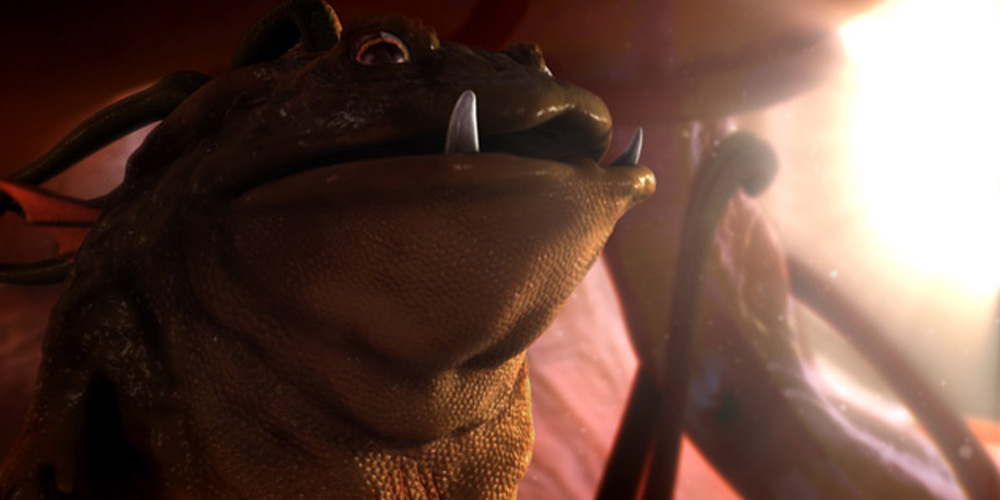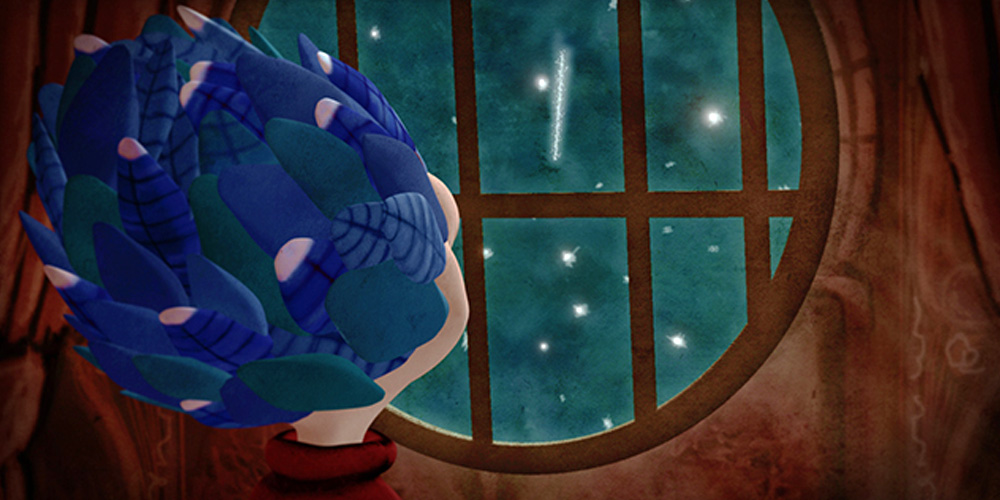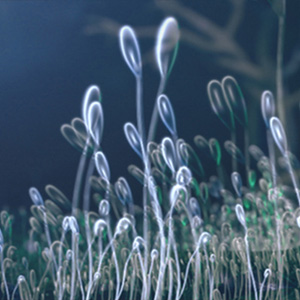
Photo: “Proximity” (2013) by Kristin Müller, Peter Affenzeller, Manuel Preuß (Credit: FH OÖ)
What defines a good animation? And what developments can be expected in this area nowadays? Prof. (FH) Mag. Dr. Jürgen Hagler is a lecturer at the Department of Digital Media at the University of Applied Sciences Upper Austria Campus Hagenberg, where he heads the areas of computer animation and animation sciences. In the interview, he presents us a quick inventory of the genre and also introduces the course in which the animations were created that he will show during the Deep Space LIVE at the Ars Electronica Center on THU March 20, 2014, 8 PM.
What will we see during the Deep Space LIVE at the Ars Electronica Center?
Jürgen Hagler: In this Deep Space LIVE I will show you a selection of 14 animated short films from the last five years that arose at the University of Applied Sciences Upper Austria Campus Hagenberg in the context of the training within the “Department of Digital Media” as semester projects or as graduation films. Mainly, these are master projects from the course “Digital Arts“. This screening shows very different forms and genres: 2-D and 3-D animations, stop-motion films, narrative works, experimental approaches as well as hybrids of 3D animation and live action.

Photo: “Zerebrale Dichotomie” (2009) by Florian Juri, Andreas Atteneder, Valentin Ortner, Sabine Pils and Christoph Struber (Credit: FH OÖ)
The playlist also includes animation titles like “cerebral dichotomy” …
Jürgen Hagler: “Cerebral dichotomy” (Zerebrale Dichotomie) is an award winning computer animated film, which was produced by five students as a semester project. It focuses on a fundamental question that could not be more banal. Here, two different creatures meet each other inside the human nerve center and discuss an obviously important decision. The two figures are already known to a wide audience, as they were used for the cinema spots of the faculty of computer science, communication and media of FH Upper Austria, that were played in the last few years at local cinemas.
The stop-motion animation “Leberkäse” shows the production process of a meat loaf. Indeed, the two filmmakers Rafael Mayrhofer and Katja Flachberger did not use the well-known formula of this food but they followed the footsteps of animation filmmakers such as Stephen and Timothy Quay or Jan Švankmajer.
The animation filmmaker Dominique Sellitsch shows in the 2-D animated film “Blue Jay in the Sky” a boy who is not feeling well in his current situation and takes refuge in a dream world. Sellitsch animates digitally revised drawings to a sensual journey at the border between reality and fantasy.

Photo: “Leberkäse” (2010) by Rafael Mayrhofer and Katja Flachberger (Credit: FH OÖ)
You coordinate the master course “Digital Arts” at the University of Applied Sciences Upper Austria Campus Hagenberg – what you teach exactly in these four semesters?
Jürgen Hagler: The master course “Digital Arts” offers three tracks: animation, games and audio/video. We pick up our students from their previous knowledge in these three areas and offer them deep insights in practice and in theory. Formal basics and practical production techniques are closely intertwined within this study and complement each other. The training on production side concentrates on the conceptual elements of animation production and game development as well on solid handling of professional tools.
The focus is on the implementation of creative ideas through conscious development of a clear, individual aesthetic and targeted use of technical means. Animation and games are defined as broad expanding field: Thus, in addition to the computer animation and games design and development, you will find in the curriculum traditional analog animation techniques and interactive techniques at the interface between game and installation, too. Modules in the areas of video and audio supply you with the technical and design basis for further training in post-production.

Photo: “Blue Jay in the Sky” (2012) by Dominique Sellitsch (Credit: FH OÖ)
Apart from the artistic aims of “Digital Arts”, which job prospects are there in Austria? Who is addressed with the study?
Jürgen Hagler: Due to a solid education in practice and theory the study provides a good basis on the one hand to gain ground in companies and on the other hand to do your own thing as an independent media designer or producer. Our alumni can be found in prestigious international studios from New York to Berlin, but also in Austria and fortunately more and more in Linz, where in recent years an active games and animation scene arised.
What defines a good animated film?
Jürgen Hagler: For a successful animation there are just few ingredients crucial. The most important is the concept, the story and the question of how animation can communicate this idea.
When you look at the year 2020 in the field of computer animation – what could be the changes? What developments do you see today?
Jürgen Hagler: Until the 1990s, computer animation was exclusively reserved to a elite group of software developers and animation and film makers. In order to create digital animations, special knowledge and expensive equipment was needed. A constant companion were technical constraints and limitations. Meanwhile, the technology is cheap, available and easy to use. In the future, the animation tools and interfaces such as motion capture and 3-D scanners will be more adapted to the needs of designers, so these tools move successively to the background and converge smoothly.
In the film, the boundaries between animation and live recording have dissolved in recent years. Digital effects are, if they are not recognized, no longer seen as such. Even digital performer can not be separated and distinguished of real actors from both, audience and the experts. Computer animation has however, fundamentally changed the film production and the cinematic storytelling, which can be measured with the increased appearance of hybrid films. The revolution is generally speaking history, but we can certainly expect another exciting developments.
But animation is more than film: Animation penetrates our everyday lives increasingly, if we think for example of the many animated screens, which we daily meet in public places or in transport or in things that accompany us every day, such as mobile phones or tablets. Animation is the basis for computer games, for scientific visualization, simulation and for much more and will be found in a variety of new interfaces in the future. Current trends are to be found for example in the fields of architecture, theater and performance, as they were discussed among others in the symposium “Expanded Digital Animation” at Ars Electronica 2013.
